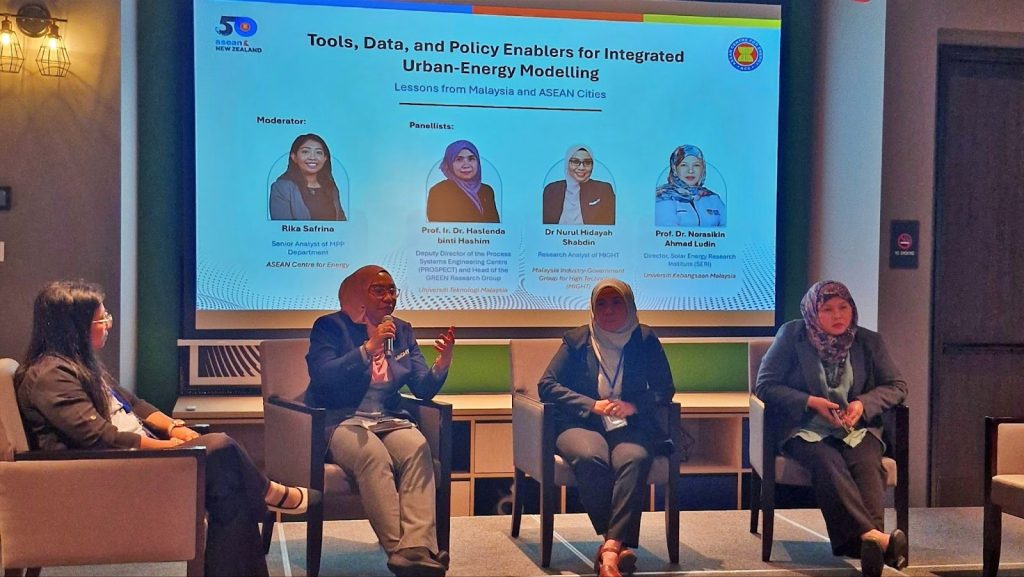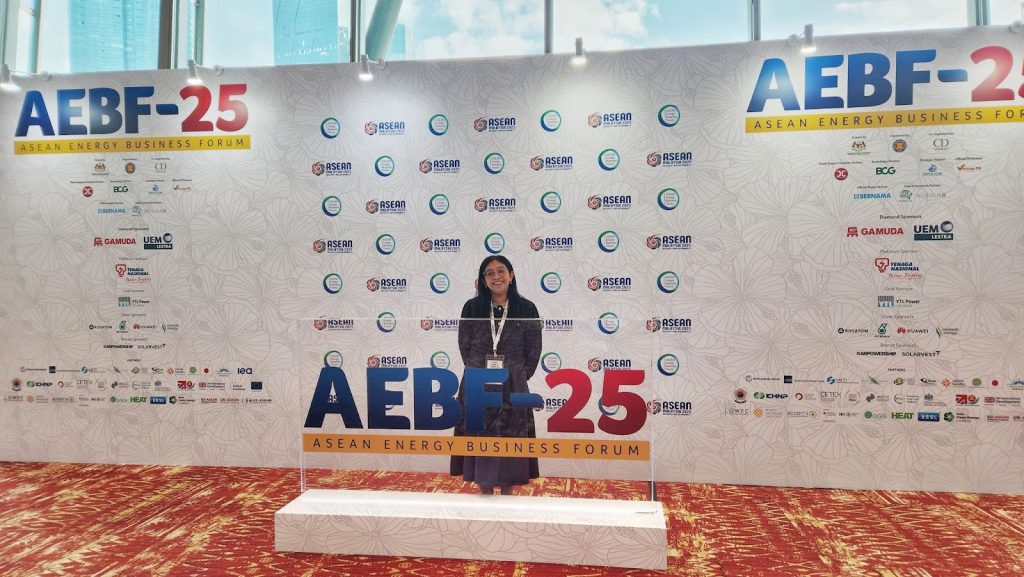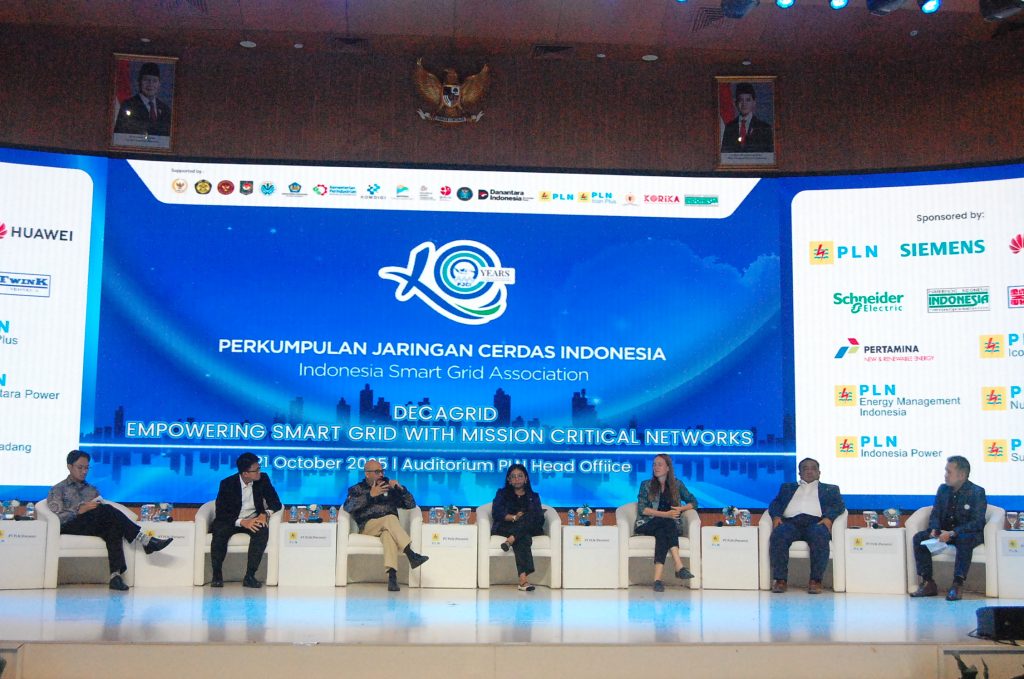My October this year was powered by smart energy and digitalisation. From moderating panels to shaping scenarios, from city-level to regional discussions, the conversation centred on how ASEAN’s energy transition will be digitally interconnected. Here’s a glimpse into my October journey.
Bridging Urban and Energy Systems in Putrajaya
Kicking off the month, my team and I from the ASEAN Centre for Energy travelled to Putrajaya for a regional workshop on Integrated Urban–Energy Planning and Modelling, following our inaugural session in Jakarta last year. This year was special because we went beyond energy ministries and brought urban planners into the conversation via the ASEAN Smart Cities Network. That one decision alone felt like a milestone. As part of the annual plans outlined in the ASEAN Plan of Action for Energy Cooperation (APAEC) 2021-2025, we bridged the energy and urban sectors, as cities are the largest consumers of energy and major sources of emissions, globally accounting for 75% and 70%, respectively. Integrated planning enables efficient and cleaner systems, like smart grids, electric vehicle infrastructure, and energy-efficient buildings. They help reduce costs, waste, and emissions and makes cities more resilient and adaptive to future population growth and energy demands.
During the Workshop, which was supported by the New Zealand Ministry of Foreign Affairs and Trade, I provided a scene-setting presentation on smart cities and energy digitalisation in ASEAN before we deep-dived into national sharing sessions. I also moderated the last panel discussion on “Tools, Data, and Policy Enablers for Integrated Urban-Energy Modelling” featuring examples from Malaysia and all brilliant women experts from MIGHT, UTM, and UKM (unplanned arrangements but absolutely empowering)! The next day’s visit to Perbadanan Putrajaya (Putrajaya City Council) really opened my eyes to the rigorous standards and indicators that must be fulfilled to be considered a smart city. Also called “Intelligent Garden City”, Putrajaya is now the leading smart city in Malaysia and a best practice for other cities in Southeast Asia.

Designing ASEAN’s Energy Future through AEO9
A week later in Jakarta, we hosted the first AEO9 (9th ASEAN Energy Outlook) Workshop on Scenario Development. AEO is ASEAN’s most prominent energy modelling work, released every two years, and used widely by policymakers, researchers, and industry. AEO has been the flagship publication of ASEAN, projecting various future pathways for energy landscapes in Southeast Asia. After publishing AEO8 last year during the 42nd ASEAN Ministers on Energy Meeting (AMEM) in Laos, we are currently developing the 9th version of AEO, expected for launch at the 44th AMEM under the Philippines’ ASEAN Chairmanship next year (might be around September/October). As usual, we are conducting closed coordination and consultation with the ASEAN Member States during its development.
Following up on the Kick-Off Meeting of AEO9 in July 2025, this first Workshop focused on shaping the future by designing scenarios, assumptions, and national priorities. I facilitated a discussion with Laos, Malaysia, and Timor Leste, where topics ranged from regional decarbonisation pathways to something increasingly crucial: the rising electricity demand from data centres. This Workshop set a foundational stage for AEO9, ensuring every scenario reflects real national needs while aiming for collective regional ambition.
Two Panels with Big Narratives on ASEAN’s Digital Energy Future
Next, I flew to Kuala Lumpur for my 6th ASEAN Energy Business Forum (AEBF). AEBF is ASEAN’s premier energy dialogue for policymakers, industry, and innovators, conducted in conjunction with AMEM. This year, I moderated two inter-related panels, both having strong women representation.
In the first session, Transforming ASEAN’s Energy Landscape Through Digital Innovation, our esteemed panellists from UNITEN, MYCentre4IR, Agora Energiewende, Mott MacDonald, and I talked about artificial intelligence (AI), smart grids, cybersecurity, data governance, and the energy-intensive rise of data centres. Digital systems are reshaping power grids, but they’re only resilient when supported by strong network infrastructures, human capital, financial mechanisms, and regulation frameworks. (More on this in our recent policy brief: Enabling a Resilient and Sustainable ASEAN Energy Future through Digitalisation.)
The second session, titled “Powering Smart Cities: Energy as the Backbone for Urban Innovation”, features experts from Gamuda, C40 Cities, UKM, and MIGHT. With most ASEAN citizens projected to live in cities, energy technologies will be crucial in enhancing urban resilience, reducing emissions, and improving the quality of life. This includes waste-to-energy, solar rooftops, and digital twins, among others. Investment in technical capacity, knowledge sharing, and local research and development is key to integrated urban-energy systems. It must also be supported by clear and coherent policies that facilitate diverse financing options, such as public-private partnerships and blended finance. Above all, ASEAN’s smart urban transformation must ensure citizen participation and universal access, while minimising the rural-urban divide through innovation.

There is No Transition Without Smart Grid
Back in Jakarta, I joined DECAGRID: Empowering Smart Grids with Mission-Critical Networks Symposium, marking 10 years of Indonesia Smart Grid Association (PJCI). I was glad to speak alongside experts from PLN, GIZ Indonesia, KORIKA, Siemens, and RUMAH PATEN. In the “Outlook & Roadmap: Opportunity, Challenge, and Investment for Smart Grid Indonesia” session, I shared ASEAN’s vision for smart grids and regional grid interconnection. As we enter APAEC 2026–2030, digitalisation is now a key part of the regional energy blueprint’s strategies.

Photo by Decagrid Symposium Organiser
Talking Long-Term Energy Futures with Indonesia’s Supreme Audit Board
My final October stop was perhaps the most unexpected (and sudden request): presenting AEO8 findings to Badan Pemeriksa Keuangan (BPK), Indonesia’s Supreme Audit Board.
We discussed energy demand trajectories. Without policy intervention (Baseline Scenario), the region would experience 2.6 times the energy demand growth by 2050 compared to the 2022 level, a trend also observed in Indonesia. We also talked about the impact of economic growth targets (including an ambitious 8%). For instance, how the digital economy and AI expansion add new pressure and urgency to power planning. One insight that struck me came directly from BPK. How do we track whether policy recommendations actually influence government decisions? A very valid question that is difficult to answer.
Summarising them all, whether discussing smart grids, smart cities, or energy modelling, one pattern kept resurfacing. Digitalisation is no longer a supporting actor in ASEAN’s energy transition, but it’s becoming the backbone. This backbone should be solid and built on sound data governance, resilient infrastructure, regional cooperation, and a people-centric approach. I’m excited and hopeful to see ASEAN building an energy future that is cleaner, smarter, and inclusive.
